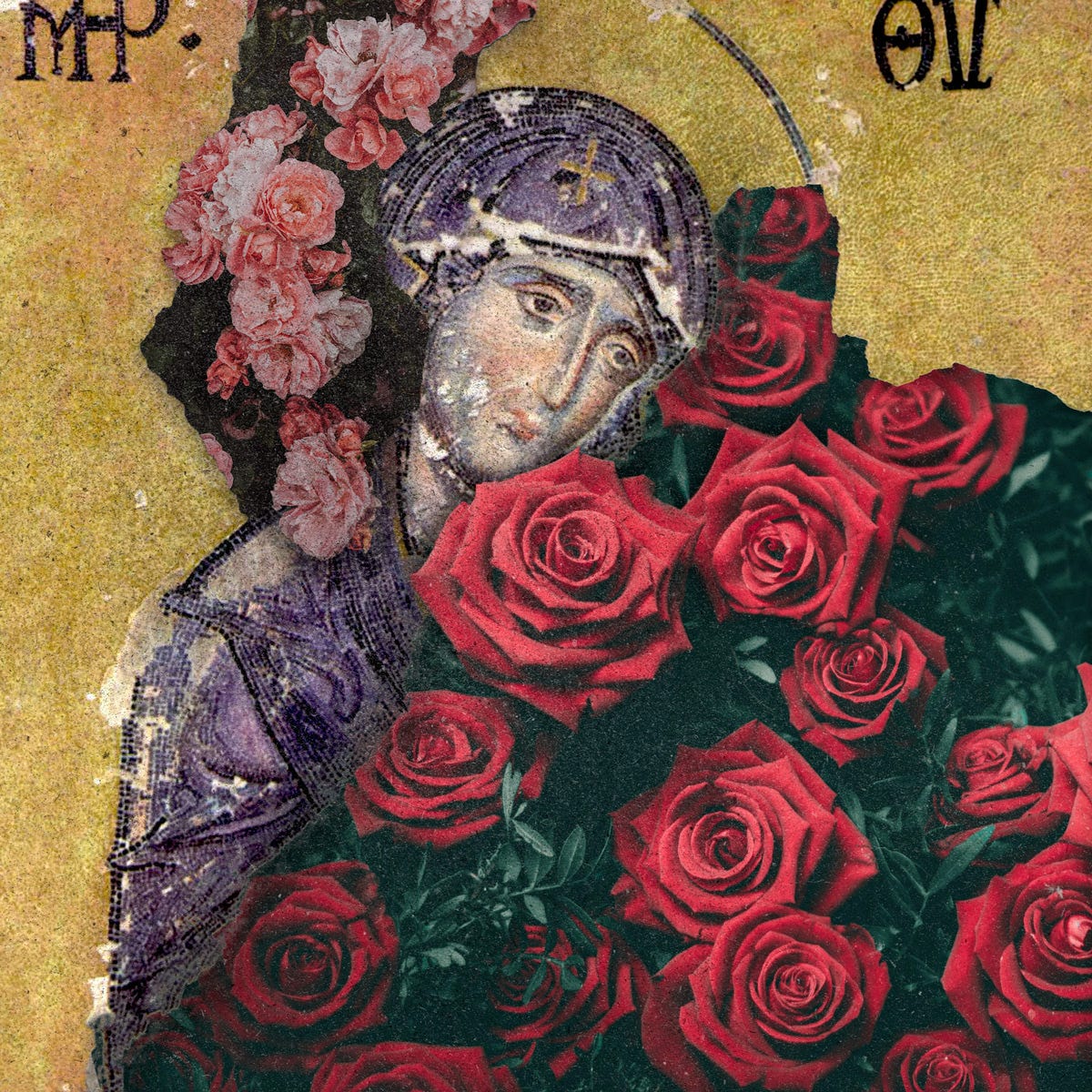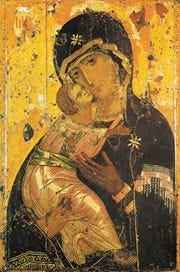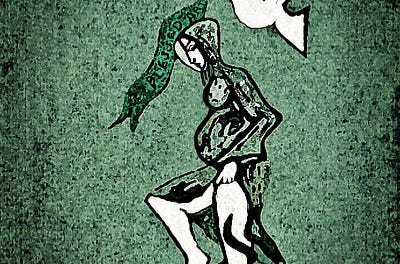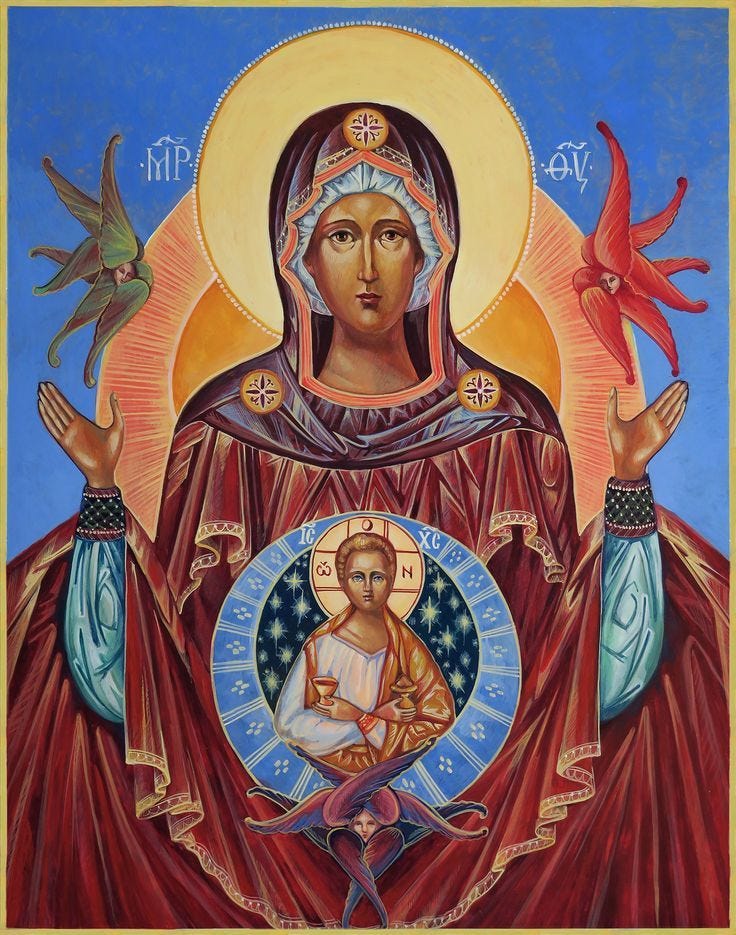Revelation 12.1-17
In the letter my grandfather left me upon his death, he lamented I had wasted my potential “on such a trifling pursuit.”
His last words to me stung, to be sure.
Still, I’ve never had to suffer on Christ’s account. When it comes to my Christian convictions, I’ve never had to risk anything more than my embarrassment and self-image. I’ve never had to hold onto this Story at the risk of losing everything else. And I’ve known few who have.
But.
I have known a few.
Her name was Mary.
When she came to the states, she asked her friends to call her Marie. Marie’s son once sang, “Let My People Go” in my first congregation. During seminary I had several side-hustles to pay the bills because that first congregation didn’t exactly bring home the bacon. Among my side-hustles, I worked as the assistant after school director at Princeton Junior School.
Marie Garber was my supervisor.
Marie was Princeton Junior School’s librarian. Marie was also from Liberia, a coincidence of sound that confused the schoolchildren to no end, “You’re from a country called Library?" Marie had a rich, East African accent and sing-song, soulful voice. She always spoke incredibly slowly, as if she wanted to linger over every happy syllable her life gave her. And she had a laugh that began somewhere deep in her belly and always ended with her embracing in her arms whoever was nearest to her.
Marie, her husband, and their three children lived in New Jersey as refugees, having fled from Liberia not that long before I met her. Soon after the dictator Charles Taylor violently wrested control of her country, Marie and her family became his prey. Marie and her husband had been civil servants. They were just ordinary people who worked a job five days a week and on the weekends taught Sunday school at their Methodist church. When a modern day Herod imposed his power over them, Marie’s faith in a rival Lord compelled her to act. She and her husband began advocating against the Pharaoh who held them in bondage.
She seldom spoke of it. When she did so speak, it was bereft of bravado. I pulled reluctant snippets of her story from her like cotton from an aspirin bottle. Her sacrifices and the faith which motivated it and prepared her for it— she remained ever reticent to speak of it. One afternoon when the children were having a snack of animal crackers and apple slices, I asked her if she and her husband had been “political.”
“Is that what prompted you to resist?”
Marie replied with a luminous laugh, “That’s what your government called us, political refugees.”
She bit the head off of a lion and added, “But no. We were not especially political. We were just Christians.”
“I can’t imagine how frightened you must have been.”
She looked at me over the rim of her glasses, and then in the same voice she always had when she read to the children, the tone of voice that let you know the moral of the story was coming, she said, “Frightened? Perhaps. But then, there’s no need to fear when you can ask Mother Mary to pray for you.”
“Mary?” I said, surprised and a little confused, “You mean, like, Mary Mary? You asked Mary to pray for you? You don’t sound like any Methodists I know.”
She laughed again, a laugh that sounded like an open hand, a light in her eyes that seemed to warm her whole countenance.
“I don’t sound like any Methodists you know? Hmm, maybe that’s because you don’t know enough Methodists with biblical problems— you know, food and shelter, evil and oppression. Maybe you need to get to know some of Mother Mary’s children better.”
And then she stopped laughing and, like she was remembering those dark days, she said, “For those of us who have suffered the Father of Lies in this world, the train of Mother Mary’s robe is very wide, wide enough to carry us all.”
“And a great sign was seen in heaven: a woman arrayed with the sun, and the moon under her feet, and upon her head a crown of twelve stars…”
A friend of mine, Matt Milliner, teaches art history at Wheaton College. When it comes to Mary’s place in the Protestant tradition, he joked to me over Zoom:
“Imagine you’re at a party, and it’s a really great party with wonderful appetizers and delicious desserts and fantastic drinks. It’s a party with all the right people— people you love and people you want to come to love. And the party’s working. It’s all working. All of a sudden, someone bursts in from the cold, takes off their coat and says, “Hi! Hi!” And you say, “Welcome! Hello! Come in! Sit down. Have a drink. Let’s make a place for you.” And you say to one of the guests, “Get ‘em a drink! Get ‘em a drink!” But before the drink even arrives, the guest grabs a hand full of pretzels and says, “Sorry, I’ve got to be on my way now.” And just like that, the guest is gone. That’s Mary in the life of the church. We invite her inside the party long enough to grab a few pretzels before we push her back out the door.”
I laughed at Matt’s Marian analogy, but he leaned forward in his desk chair and held up to me an icon of Our Lady of the Passion. Suddenly serious, he said, “How embarrassing is it that not only do we not invite Mary to all twelve days of the Christmas party, we totally ignore that Mary— this woman— is not simply a character in a seasonal festivity. She is a pivotal protagonist throughout the story of salvation.”
Mary is a pivotal protagonist throughout the story of salvation
“The dragon waxed wroth with the woman [clothed with the sun], and went away to make war with the rest of her offspring, the seed that keep the commandments of God, and hold the testimony of Jesus.”
In the Apocalypse, the seventh archangel has blown the final trump blast, and the prophet John sees projected onto the skies above him cosmic warfare, the struggle between the triune God and the Father of Lies that is the true picture of reality. Notice the dark comedy at the heart of the passage. Jesus lives with death behind him; therefore, Jesus holds the keys of death and hades. The victory of the Son of God over all the powers that are not God is already assured. The devil— symbolized by John as by Ezekiel before him as a dragon— lives on borrowed time. “He knows his time is short,” John hears all the company of heaven sing.
His pomps are waning. Already all but defeated, the devil has no power but deceit. His only recourse is “to make his way through the world as a teller of outrageous lies.” Since the devil is no match for the Son, he hunts instead the Son’s mother and the Son’s siblings. The devil’s cause may be lost and therefore futile; nonetheless, the dragon is shrewd, realizing that “if he cannot directly attack the Woman’s Son, he hurt the Son through the Mother and so he mounts an attack on her.”
Yet— again, its comic in a Wile E. Coyote kind of way— the woman proves to be maddeningly elusive prey for the dragon. With the devil in pursuit, the woman, as though she’s the prophesied supplicant from Psalm 55, is given eagle’s wings to flee from his wrath and escape into the wilderness. When the devil attempts to flood the woman from her refuge, the devil is met with a resistance that is an exodus in reverse. The ground beneath her opens and swallows up the many waters.
The earth itself responds as though she is heaven’s prized possession.
Remember, the Bible’s chapter and verse divisions are not inspired nor are they original to the scriptures. At the end of our chapter eleven, the Seer reports a vision of the ark of the covenant, but John does not otherwise describe the ark of the covenant. Then, in the very next verse— our chapter twelve— John describes the Woman Clothed with the Sun.
What John sees is the ark of the covenant.
But what John describes is the Woman.
She is the ark.
Mary is the ark of the covenant.
And make no mistake, from the time of the church fathers forward it is undisputed that the Woman Clothed with the Sun is the Theotokos, Mary the Mother of God. It’s plainly there in the descriptive details. She resembles the Son of Man that John saw in his initial vision. She is clothed with the same light that illumines his countenance. John sees the moon trampled under her feet. In scripture, the moon symbolizes “all courses and alterations of times, and what so ever is mutable and corruptible in this world, all affections also and infirmities.” In other words, that the Woman stands with the moon subdued underneath her feet, she is the Mother of him who is Alpha and Omega. The Woman Clothed with the Sun wears a crown of twelve stars, one star for every tribe and patriarch. Thus, the Woman is the Queen of Israel and, just so, the Mother of Israel’s Messiah.
But above all else, she is the ark.
As one ancient icon titles her, she is the “Container of the Uncontainable.” Or as John Donne puts it in his poem “La Corona,” she is “Thy Maker's maker, and thy Father's mother.”
Yuri Sipko is a prominent Russian Baptist minister. In early August, Russian police raided Sipko’s home hoping to discover evidence they could use to charge him with criticizing the Russian military and posting “false information” online about the invasion of Ukraine.
Yuri Sipko was born during Stalin’s reign and grew up in Khrushchev’s Soviet Union, a period when the communist regime persecuted Christians. Recalling his formative years in Siberia, Sipko remembers:
“Baptists were considered to be one of the main enemies within the country. As children, we were discriminated against at school. We weren’t accepted to the compulsory Soviet youth organization and there was frequent bullying and threats that we would be taken away from our parents and sent to an orphanage.”
The threats were not idle. The Soviets sent Sipko’s father, also a Baptist pastor, to prison for five years on false allegations of sedition. Unlike his father before him, Yuri Sipko has thus far avoided arrest and imprisonment. When Russian police arrived at his home at Vladimir Putin’s behest, Yuri Sipko had already slipped safely out of the country. Weeks later, Sipko described his defiance in humble, matter-of-fact terms.
“The charges are based on the law that was passed immediately after the invasion,” The word ‘war’ itself was outlawed, it was banned. You could not call this operation a war. The word ‘peace’ was banned. You could not call for peace. And there were public arrests and fines and imprisonment and intimidation for any speech criticizing Russia’s actions.”
Despite the law and the charges looming over him, Sipko, who is over seventy years old, has persisted as a stubborn critic of Russia’s “criminal” invasion of Ukraine. Even after his exodus, he returned to Russia and spoke from Moscow and solicited the aid of one person in particular. Some might think it a peculiar prayer request coming from a Baptist preacher.
“We continue to pray constantly for the Lord to stop this bloodbath. We pray for God to protect Ukraine and the Ukrainian people. Lord, please stop this horrible, hateful operation. Please stop the tanks. Please stop the rockets. Please stop the cannons so that not a single more human life is being taken. Please stop them with the hands of your angels, please stop them with the hand of your Mother— the Woman Clothed with the Son.”
My friend Matt pointed again at his icon of the Our Lady of the Passion, an emphatic gesture which suggested If you don’t get, you don’t get it. “I say this as a Protestant Christian,” he said, “Don't dare think that somehow your conversation with Mary and your interest in her is in competition with your relationship with Christ…You are flirting with heresy if you do not have a doctrine of Mary as Mother of God. You are flirting with heresy if you do not have a starring role for Mary in your Christian faith.”
You are flirting with heresy if you do not have a starring role for Mary in your Christian faith.
And he’s absolutely right.
It was the Arian heresy in the fourth century that led to our creedal dogma. Contrary to the New Testament witness, the Arians insisted about Jesus, “There was a time when he was not.” In other words, the Son is not one substance with the Father, making Mary a mother like any other mother of a mere human.
In the history of the faith, heresy always begins by demoting Mary.
But even straightforwardly in scripture, Mary does more than offer the angel her reply, “Let it be with me according to thy word.” From the cross, the Lord Jesus makes Mary the Mother of all whom he chooses to call sisters and brothers, “Behold, thy Mother.” Evidently, Mary took her son at his word because at Pentecost she gathers with his disciples in the Upper Room to await his Spirit’s arrival from the last future. And in the Apocalypse, Mary is the prophetic image for her Son’s Body and Bride, the church struggling to endure faithfully in a world ruled by the Father of Lies.
Nevertheless, even these straightforward scriptural examples do not begin to capture the mystery of the woman “whose womb is more spacious than the stars.” In 431AD, the Council of Ephesus mandated Mary’s title as Theotokos (God-bearer) an item of Christian dogma and thus condemned as heresy any understanding of Mary that flinches at professing her as the Mother God.
Simply put, if you balk at calling the Mother of Jesus the Mother of God, then you are a heretic.
Theotokos.
She’s not simply the mother of Jesus’s adopted brothers and sisters. She’s a pillar of the Acts Church, but she’s not just a pillar. She’s surpassingly more mysterious than the Woman Clothed with the Sun.
She’s the Theotokos.
As the Protestant Reformer Martin Luther insisted:
“Men have crowded all her glory into a single word, Theotokos…therefore we ought to call upon her; so that, for her sake, on account of Mary, God may grant and do as we request.”
Possibly, Luther had in mind the second part of the Ave Maria, “Hail Mary, Mother of God, pray for us…."
It makes all the difference that the Ave Maria does not solicit prayers thusly, “Saint Mary, pray for us.” On the one hand, since Jesus lives with death behind him and the saints live with Jesus, invoking the prayers of Mary is no different than asking any fellow believer, living or dead, to pray for you. On the other hand, the dogma will not allow us to demote Mary to just another fellow believer.
Mary, the creeds require us to confess, is more than Saint Mary.
On what basis then do Christians invoke Mary’s prayers specifically as the Mother of God?
The answer is here in the Apocalypse.
The answer is here in Revelation 12— Revelation 11 and 12.
Mary is not merely Saint Mary.
Mary is the ark of the covenant.
You may have seen the icons, images named the Virgin of the Sign. My friend Matthew calls them the Ultrasound Mary. The ancient images show a pregnant Mary with a small window opened onto her belly through which you can see spy the gestating God inside her.
The ancient church father, John of Damascus formulated a useful maxim the it comes to thinking about Mary:
God is his own space.
In himself, God is nothing but himself.
God is his own space. The world is another space altogether. And, by definition, the two do not overlap. But, if God is to do with his created world and if God’s creatures are to find him in this world, then God needs his own space in creation from which he can be locatable and present to his creatures.
Heaven is the Bible’s word for the space God makes for himself in his creation.
Heaven is the space God makes for the sake of his creatures on earth. It’s right there in the creed, “I believe in God the Father Almighty, maker of heaven and earth.”
Just so, when Jacob awakes from his vision of a ladder traveled by angels, he erects an altar and marks the spot as “the gate of heaven.” He designates it so because it is a space in creation where the Creator may be located. But in the Bible, God’s space in creation is not simply geographic space; it’s historical space. As Robert Jenson writes, short of the End God’s heaven is the heaven of a certain nation, a particular people. “The Lord has space in his creation,” Jenson writes, “in that he dwells among a people, who as such take temporal space in creation.”
Among the people Israel, God takes space in the tabernacle and in the temple, on the lips of the prophets and over the scrolls of the torah, and in and on and around the ark of the covenant. When David danced before the ark, scripture says clearly, David danced before the Lord.
And now, John sees in the Apocalypse, Mary is this space for God. She is not one in a series, a saint among saints, not even a saint above all saints. She is absolutely singular.
The space above the temple’s cherubim throne, the space in the ark of the covenant, the space on the prophets’s lips, the space taken up the torah’s scrolls, the space in the exodus’s tent of meeting— all of it is at once (and, evidently, forever— according to John) reduced and expanded to Mary’s belly.
She is the Container of the Uncontainable.
Which is to say, she is not simply the Queen of Heaven.
She is it.
She is not Saint Mary.
She is the space scripture calls heaven.
Thus, she contains not only the Uncontainable Son but all his sisters and brothers, what St. Augustine called the totus Christus. Therefore, to solicit Mary’s prayers is— what we do at the Table— to beseech the whole company of heaven; it’s to beg the church triumphant to intercede for the church on earth still struggling to endure a world ruled by the Father of Lies.
On September 11, 2001 I pulled myself away from the television set in the Princeton dining hall and I clocked in at Princeton Junior School.
The children had no notion of the day.
I found Marie alone in her library, prostrate by her desk and the Ave on her luminous lips, Hail Mary, Mother of God, pray for us. When she sensed me in the room, she looked at me over the rim of her glasses and said:
“You’re going to be a pastor some day so don’t forget. It’s quite simple Mr. Jason. If you can always remember that Mary is the Mother of God, then Jesus will never be just a once upon a time teacher. If you do not forget that Mary gave birth to God, then you will remember that history is never without hope.”
I haven’t forgotten.
But then again, Marie was not completely correct.
I have more than Mary to remember that God is not a God above history but makes it with us. Mary is not the only space heaven occupies on the earth. The altar is also an ark. As much as Mary, these creatures of bread and wine are clothed with the sun. They too contain the uncontainable. They too are more spacious than the stars.
So whatever seems hopeless in your life, come to the table.
Here, you need not even pray, “Hail Mary…”
You need only hold out your hands and say, “Thanks be to God.”
Come to the table; this is the gate of heaven.



















Share this post